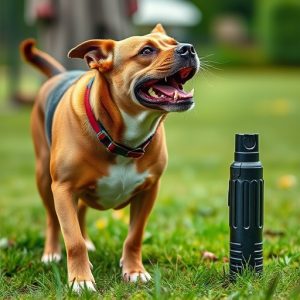Mace Spray Legal Defense: Post-Opening Potency & Strategic Advocacy
Mace dog spray, a self-defense tool against aggressive dogs, uses capsaicin from chili peppers but i…….
Mace dog spray, a self-defense tool against aggressive dogs, uses capsaicin from chili peppers but its potency degrades after opening due to air exposure. Legal usage is subject to nuanced regulations that require proportionality and minimize harm to animals or bystanders. Understanding the diminished potency and local laws regarding Mace spray use is crucial for mounting a robust legal defense. Attorneys must assess evidence considering spray amount, distance, and mitigating factors while navigating potential prosecution challenges related to excessive force or misuse.
“Unraveling the legal complexities surrounding mace dog spray requires a deep understanding of both its function and potential implications. This article offers an in-depth exploration into the world of mace spray, focusing on key aspects like potency after opening and its impact on legal defenses.
We analyze how the duration of effectiveness influences strategic decision-making for those facing charges related to mace spray usage. Furthermore, we provide insights into building a robust legal defense, ensuring individuals are equipped with knowledge to navigate these legal intricacies.”
- Understanding Mace Dog Spray and Its Legal Implications
- Analyzing Mace Spray Potency After Opening: What Does It Mean for Legal Defense?
- Building a Strong Legal Defense Strategized Around Mace Dog Spray Usage
Understanding Mace Dog Spray and Its Legal Implications
Mace dog spray, a powerful chemical agent designed for self-defense against aggressive dogs, has both practical applications and legal implications. Understanding its potency and effects is crucial when considering its use and subsequent defense in legal scenarios. The spray typically contains capsaicin, derived from chili peppers, which irritates the eyes, nose, and throat of the targeted animal, temporarily disorienting it. However, after opening, Mace spray potency can degrade over time due to exposure to air and other environmental factors.
Legal defenses surrounding Mace dog spray usage are nuanced. In many jurisdictions, citizens have the right to protect themselves and their property against perceived threats, with dog spray being one such tool. Yet, the legality of its use varies based on circumstances, including the severity of the threat, whether the spray was used proportionately, and any potential harm caused to the animal or bystanders. Knowledge of local laws and regulations, as well as understanding the specific potency levels remaining in a spray after opening, can be vital for mounting an effective legal defense.
Analyzing Mace Spray Potency After Opening: What Does It Mean for Legal Defense?
After a mace spray canister is opened, understanding its potency becomes a critical aspect of legal defense strategies. The effectiveness of mace spray—often used by law enforcement and security personnel—relies heavily on its active ingredient’s concentration. Typically, manufacturers label the canisters with this information, providing insights into how much capsaicin (the primary active compound) is present. However, these labels may not fully capture the spray’s potency after it has been exposed to varying environmental conditions or if the canister has sat unused for an extended period.
For legal defense purposes, knowing the specific concentration of capsaicin in a used mace spray canister can be pivotal. It helps establish whether the force was reasonable during an arrest or self-defense incident. Legal professionals and experts can analyze these levels to challenge or strengthen cases, ensuring that individuals’ rights are protected while navigating the complexities of mace spray usage in legal contexts.
Building a Strong Legal Defense Strategized Around Mace Dog Spray Usage
When building a legal defense around Mace dog spray usage, a strategic and well-informed approach is paramount. The first step involves understanding the specific circumstances under which the spray was deployed, including the reason for its use and whether it was an appropriate response to the situation. An experienced attorney should then assess the evidence, focusing on factors like the amount of spray used, the distance between the handler and the target, and any mitigating factors that could impact the case.
Additionally, knowledge of local laws regarding Mace spray potency after opening is crucial. This includes understanding the legal definition of “potency” and how it’s measured. An effective defense strategy should also account for potential challenges from prosecution, such as allegations of excessive force or misuse. By carefully examining these aspects, a robust defense can be constructed that protects the rights of both the individual facing charges and ensures the legality of the Mace dog spray usage in question.
Understanding the legal implications of mace dog spray usage is crucial, especially considering the varying potency after opening. This article has provided insights into navigating the complexities of mace spray defense strategies. By recognizing the impact of spray potency changes and employing a well-strategized legal approach, individuals can ensure fair representation in cases involving this self-defense tool. Staying informed about these nuances is essential to protect one’s rights and achieve favorable outcomes in legal battles related to mace dog spray usage.

